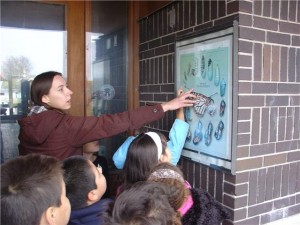Bridging the Gap: Integrating Indigenous Knowledge and Science

Originally appears in the Fall 2009 issue
One of the highlights of being an environmental educator is the sight of a student first discovering nature, be it a tiny insect or an entire forest. Yet children who grow up in inner-city neighborhoods are often disconnected from nature. Grade four students on a field trip have told me that it was their first time visiting a forest. Others have been unable to identify common vegetables such as tomatoes, cucumbers and corn. This lack of knowledge highlights a gap in environmental education. It is one thing to teach the science of pollution, habitat loss and climate change. It is quite another to impart the principles of stewardship. Stewardship implies accepting responsibility for the future of the planet. But if we have no meaningful relationship with the Earth, what motivation is there to do so other than fear? Fear can be rational, but it is the wonder, awe and respect that come with affection for a place that underlie stewardship. When we connect with the place we live, we can conceive of ourselves as part of and not separate from the Earth. This affects both our conscious and unconscious actions, and inevitably shapes our interactions with the environment.
This concept of stewardship is central in Aboriginal teachings, which generally take a holistic view of the world. Aboriginal elders are therefore a wonderful resource in environmental education, as they have knowledge to help develop unique lessons for teaching the principles of stewardship. Often, Aboriginal worldviews can explain the world scientifically, but they also emphasize respect for and personal connection with the environment. It can be argued that this is opposite to the common Western view of the environment that reduces it to an abstraction.
In Winnipeg, Manitoba, a program called Bridging the Gap brings together environmental science and Aboriginal concepts of stewardship and gives grade four students from inner-city schools the opportunity to visit local natural areas. Aboriginal elders and advisors from many different First Nations, including the Cree and Anishinaabe, are an integral part of Bridging the Gap, each bringing their own unique beliefs and knowledge to the program and maintaining an important link between past and present generations.
This content is restricted to subscribers only.
If you are not yet a subscriber, please consider taking out a subscription here.
If you are an existing subscriber, kindly log in or contact us at info@greenteacher.com for more information.





